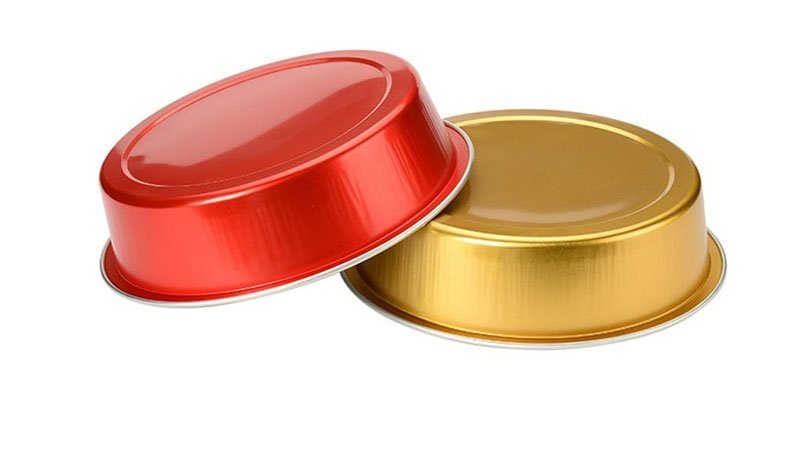How to Select the Best Foil Pan for Your Culinary Needs
Jun 22nd 2023
In culinary delights, choosing the right cookware is crucial for culinary success. Foil pans, popular for their versatility and convenience, offer various options. However, picking the perfect one can be tricky. This guide is for both professional chefs and home cooks. It will help you navigate the vast world of foil pans, ensuring you make a choice that aligns with your cooking style, preferences, and the specific dishes you plan to prepare. We'll explore essential considerations and reveal tips for selecting the ideal foil pan, enhancing your cooking experience.
What are Aluminum Foil Pans?
Aluminum foil pans are lightweight, flexible, and often disposable cookware items. They come in various shapes and sizes to accommodate different cooking requirements, including roasting, baking, and grilling.
Here's why aluminum foil pans should be your go-to choice:
- Lightweight and Convenient: Their feather-light structure makes handling and storage a breeze.
- Heat Conductivity: Excellent heat distribution ensures your meals cook evenly every time.
- Disposable and Hygienic: Easy to dispose of, they are perfect for one-time use, maintaining kitchen hygiene.
- Cost-Effective: Affordability meets quality, providing value for every meal.
- Versatility in Use: These pans can handle everything from baking to grilling.
The Importance of Pan Sizes in Cooking and Baking
The size of your foil pan plays an important role in cooking outcomes. The correct pan size ensures even heat distribution and prevents overflows. For baking, the pan size can influence the cooking time and the final texture of your baked goods.
The right pan size can significantly impact the outcome of your dish, ensuring even cooking and perfect results.
Top 5 key points
- Even Heat Distribution: Proper pan size provides evenly distributed heat, preventing undercooked or burnt spots.
- Texture and Consistency: Using the right size pan affects the texture and consistency of baked goods, leading to the desired fluffiness or denseness.
- Cooking Time Adjustment: Different pan sizes require adjustments in cooking times; a smaller or larger pan can alter the expected outcome.
- Recipe Accuracy: Following recipes precisely often means using the specified pan size for accurate ingredient proportions and final results.
- Presentation: The right pan size enhances the aesthetic appeal of your dish, making it as visually appealing as it is delicious.
Key Factors to Consider When Selecting a Foil Pan
Selecting the right foil pan involves more than grabbing the first one you see. Consider these key factors:
- Matching pan size to oven size: Ensure your foil pan fits your oven properly. An oversized pan may not heat evenly, and a small pan may cause spills.
- Considering meal type and portion sizes: The type of meal and the number of people you're serving will determine the best pan size. For large meals or parties, a larger pan may be ideal.
- Assessing durability for reuse or single-use: While many foil pans are disposable, some thicker versions can be reused. Consider the environmental impact and your specific needs when deciding.
Environmental Impact and Recycling Possibilities
Aluminum foil pans can be recycled. However, it's important to clean them thoroughly and follow your local recycling guidelines (learn more here).
Foil Pan Sizes and Their Uses
Understanding the range of pan sizes can help you choose the right one for each culinary task.
- Small Foil Pans: Small foil pans are ideal for individual servings, baking cupcakes, or meal prep.
- Medium Foil Pans: These work well for family meals, casseroles, or medium-sized roasts.
- Large Foil Pans: Large foil pans are suitable for parties, barbecues, or catering events. They are perfect for large quantities of food or bigger cuts of meat.
Rectangle vs. Square: Which One to Choose?
- Rectangle Foil Pans: These are the go-to for dishes like lasagna or casseroles. Their elongated shape makes layering a breeze.
- Square Foil Pans: These are versatile and perfect for brownies, salads, and even some shallow baking needs.
Heating and Serving in Bulk
- Steam Table Pans: Ideal for buffet-style parties where you're serving in large quantities. These pans keep the food at optimal temperature.
- Chafers: These are great for more upscale events. Pair them with foil pans for easy food storage and presentation.
- Shallow Pans: Best for salads or side dishes in a buffet or party setting.
Smart Choices for Special Cooking Scenarios

Different cooking scenarios require different foil pans. Some top suggestions are as follows:
- For BBQs or campfire cooking, durable and large foil pans are ideal for accommodating larger quantities of food.
- For baking or roasting, choose a pan size that fits your oven and matches your recipe requirements.
- For storage and freezing, If you plan to store or freeze meals, look for foil pans with lids or those suitable for freezer use.
Troubleshooting Common Foil Pan Issues
Every chef faces challenges. Here's how to troubleshoot common foil pan issues.
- Managing Spillovers and Leakages: Choosing the right pan size and not overfilling it can prevent messy spillovers or leakages.
- Ensuring Even Heat Distribution: Place your foil pan in the center of your oven to ensure even heat distribution.
Frequently Asked Questions
Can aluminum foil pans go in the microwave?
No, aluminum foil pans should not be used in the microwave. They can cause sparks and potentially damage your microwave.
Are all aluminum foil pans recyclable?
Yes, but they must be cleaned thoroughly before being recycled. Check with your local waste management facility to ensure they accept aluminum foil for recycling.
How do I clean a foil pan for reuse?
Soak the pan in warm, soapy water and gently scrub with a non-abrasive sponge. Dry thoroughly before storing or reusing.



